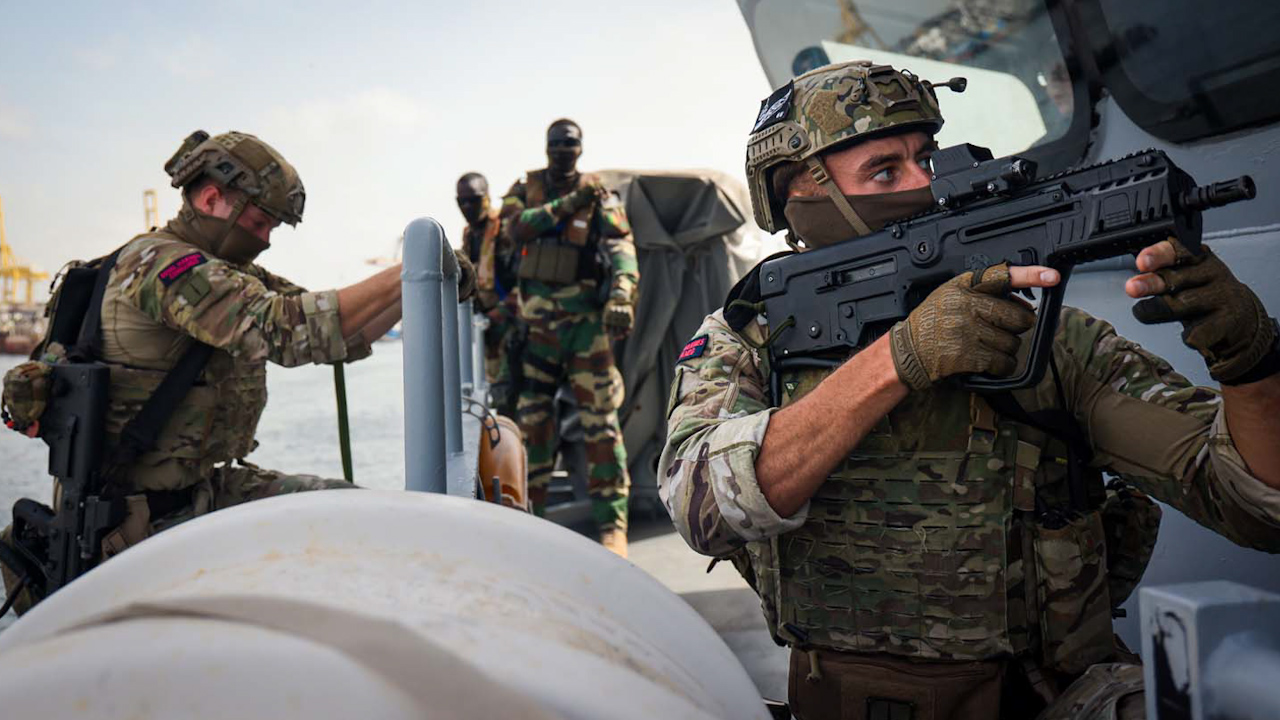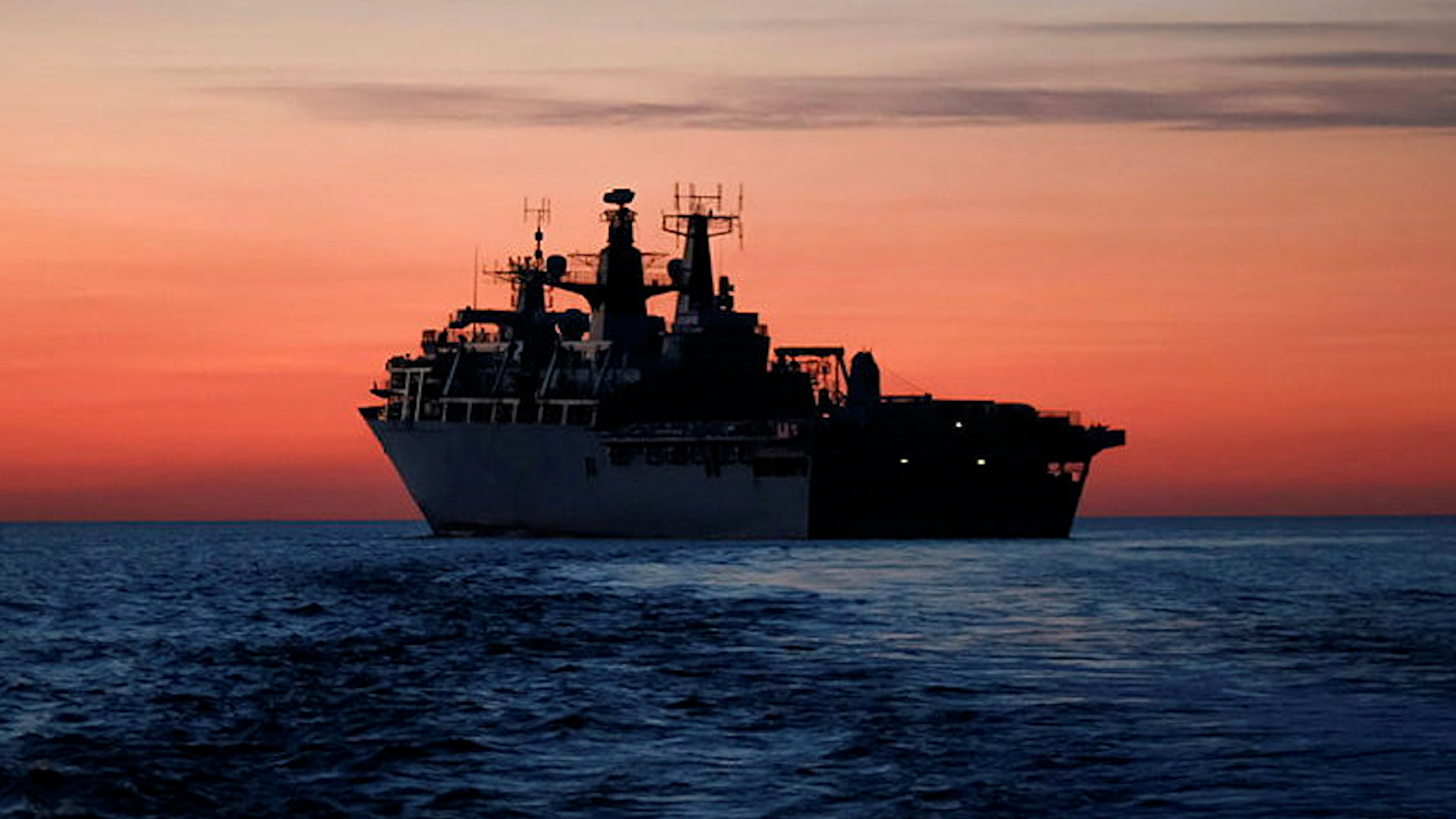
We've had plenty of announcements, but will that be backed by plenty of ships?

After recently retiring from the Royal Navy, Commodore Steve Prest looks at how the Government can deliver the new ships it's promised the Royal Marines.
New Multi-Role Support Ships (MRSS) for the Royal Navy were first announced as part of the Government's 2021 defence white paper titled Defence in a Competitive Age.
This was part of a "strategic and long-term investment" intended to bring about "a renaissance in British shipbuilding through a shipbuilding pipeline".
The National Shipbuilding Strategy Refresh, published by the Government in March 2022, stated: "The settlement for Defence announced as part of Spending Review 2020 provides the MOD with additional funding of over £24bn over the next four years.
"This will allow the Royal Navy to deliver an ambitious programme of shipbuilding, including... up to six Multi-Role Support Ships to enable powerful global littoral strike and amphibious capability with the Future Commando Force."
It may therefore have come as something of a surprise to investors and other interested parties to hear Defence Secretary Grant Shapps say that in fact while these ships had previously been desirable, we hadn't had the means to deliver them.
However, he continued, given the promised recent Defence spending uplift, the Ministry of Defence now has the money to actually deliver this programme and so has re-announced it.
At least, he has committed the Government to three ships with up to three more to follow.
Don't get me wrong, I am delighted that the additional funding has been allocated to this important programme.

These ships are sorely needed. An amphibious Commando Force without the ability to operate on and from the sea is of limited value, to put it mildly.
There is significant relief and excitement amongst the Royal Marines, in particular, at this announcement.
But I'm a bit of a traditionalist and I am of the view that we should expect the content of the Government's Command Papers and published strategies to be actual policies and strategies that they are committed to implementing, not just a wish list of good ideas to be actioned if and when the resources become available.
Perhaps I expect too much.
Aside from political chicanery though, this is genuinely good news.
The Commando Forces are undergoing a transformation to make them more relevant to the modern operational environment.
With longer-range means of attacking shipping available to an ever-wider range of potential adversaries, the likelihood of a Saving Private Ryan-style amphibious assault is ever more unlikely.
The UK's Commando Force programme seeks to deliver a force which is both more dispersed and yet more connected; able to deliver a bigger punch through longer-range and more powerful strike weaponry.
Small teams acting with autonomy, enabled by technology, to deliver effect in the most hostile environments. Hoofing!
To achieve this, the Commandos need shipping which is capable of hosting the commando teams and their supporting elements at sea, delivering them into the right locations via the next generation of insertion craft and aviation, and then supporting them at range whilst ashore.
This is what MRSS is designed to do and why its aviation facilities and surface offload capabilities, in addition to medical and logistics facilities, really matter.
These are the right ships for the UK's Commando Forces, designed from the keel up for that purpose.
To deliver a major programme like this requires many things to be lined up successfully, but there are three critical factors that enable all of the other elements.
The first is the money. You need the right quantity of money, in the right years, of the right type (money comes in two main types in Government) to enable the project to be paid for.
This money needs to be sufficient to purchase the ships, of course, but also all of the other supporting elements.
Things like reference facilities, digital models and publications; training facilities and courses, infrastructure changes, digital and data services; new concepts and doctrine, logistics and engineering support arrangements, and any organisational changes needed to manage and run the new capabilities in-service.
The funding will also need to provide for risk and uncertainty in the programme, cover inflation over the life of the project and, potentially, some of the operational costs for running the project itself.
The money is the fuel for the project delivery engine – if you starve the machine of fuel (or flood it), it can't run efficiently.
Second, you need the capacity within the Defence enterprise as a whole to deliver the programme. This is the project delivery engine.
This starts with the essential people in Government who make these programmes happen: the engineers, commercial officers and project delivery professionals, etc.
These individuals are often unfairly maligned, but are vital to the delivery of such large and complex projects. And, contrary to what you read in some newspapers, there aren't hordes of these people sat around waiting for something to do.
They are scarce resources and need to be prioritised accordingly. There's no surer way to set a project up for failure than to starve it of the expertise that it needs to get the work done when it needs doing.
It is of concern, therefore, that the recently announced Defence spending that will pay for MRSS is to be funded by reductions in exactly this workforce!
The new Integrated Procurement Model and DE&S operating models should help in this regard however, and MRSS will be a good test.

Then there's the question of who's going to build them. There will almost certainly be a competition, of course.
But the Clyde is busy for the moment with the Type 26 frigates, which will be delivered in the coming years and, in all probability, will be followed by the Type 83 Future Air Dominance Systems (FADS).
Rosyth is building the Type 31 frigates; and Harland and Wolff in Belfast are tooling up to build the new Fleet Solid Support ships.
There are other shipyards, of course, but any economist will tell you that where demand outstrips supply it will put upwards pressure on prices. That would be an unhelpful outcome.
There will though be an understandable desire to get on with the MRSS programme and deliver these ships "at pace" - the existing Landing Platform Docks (LPDs), HMS Albion and HMS Bulwark, are due out of service in 2033 and 2034 respectively.
But it's not just money that is important – having sufficient capacity in the project delivery engine matters too. This capacity must extend, of course, to all of the other aspects of the programme, not only the shipbuilding itself.
The rest of the supply chain also matters. Gearing-up to meet an increased demand makes sense, but the point of a pipeline is to smooth demand to enable a sustainable industrial base.
A "Golden Age" in British shipbuilding will only be considered as such if the pipeline is sustained. The order books are full now but a start-stop approach to shipbuilding orders, feast and famine, would be unhelpful.
The demand needs to be smoothed and sustained over the coming decades. The fuel must keep flowing!
The third leg of the stool is the workforce to crew the ships once they are delivered. It is not clear whether these ships are intended to be warships (as are the LPDs) or Auxiliaries (and thus crewed by the Royal Fleet Auxiliary) like the Bay-class Landing Ships.
This matters, partly from a legality point of view, but also whichever arm of the service needs to crew them needs to be taking action now to grow the ships' companies necessary to operate them.
Against a backdrop of poor retention, the Royal Navy needs to generate crews to bring two new classes of frigate, a new mine-countermeasures capability and a new class of ballistic missile submarine into service in the next few years.
It must do this whilst delivering an increased tempo of operational outputs to meet the threat in an ever more hostile international environment. And it will need to grow to accommodate these new ships.
The Government has been careful to say that whist HMS Albion goes into extended readiness she will not be "mothballed". It is unclear to me what the distinction is between the two.
Nonetheless, it is the stated intent that HMS Bulwark "will be regenerated from extended readiness and maintained so that she can be ready to deliver defence outputs if required".
'If required', it would seem, is doing some heavy lifting there.
Materially she will be maintained, but there seems to be no commitment to crew her. If the Navy needs to do so, other ships will need to be tied up to provide the workforce if the new ships are to be brought into service on time.
Whilst there is recent good news on recruitment, the service cannot recruit its way out of a retention crisis - it takes time to grow the skills and experience necessary to provide the extra crews.
There is optimism in some quarters that technology will help: AI, autonomy and uncrewed systems.
In the longer term it might, but for the next 10 years or more the fleet that we will have is already designed, ordered and under construction.
Yes, technology insertion will (and must) improve the capabilities of these ships, but there is no significant workforce dividend to be had. To think otherwise is a fantasy.
It is genuinely good news that MRSS has been funded and given the green light by the Government.
These three ships (perhaps rising to six) will be essential to enable the UK's Commando Forces across the globe in the decades to come.
To set this project up for success, the right funding must be provided when it is needed, the right capacity for delivery must be prioritised within the MOD, the Defence Industry and beyond, and workforce must be found to crew the ships.
Once those things are in place, the hard work of delivery really begins!
You can hear more from Cdre Prest on this week's episode of the Sitrep podcast - just search 'BFBS Radio Sitrep' wherever you get your podcasts.









